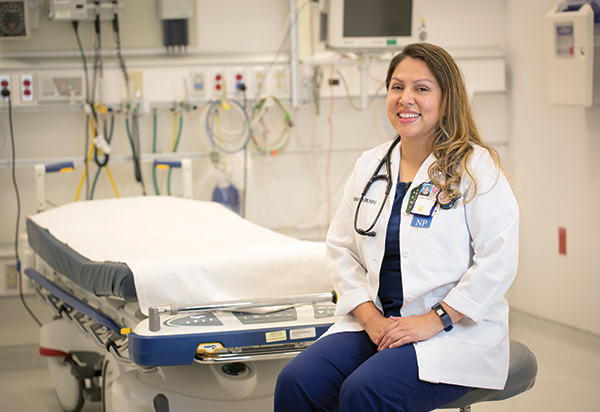
Alumni step up to serve their underserved peers
Professional associations connect communities of color
With more than 4 million professionals serving in the United States’ nursing profession, connecting with peers seems inevitable. For the small percentage of nurses from underrepresented populations, connection offers a lifeline and creates a pathway.
“How did I not know about this?”
That was Sandra Calderon’s reaction in late 2019, when the family nurse practitioner alumna learned about the National Association of Hispanic Nurses (NAHN). Fast-forward a few months later, she agreed to serve as president of the newly formed Sacramento chapter of the organization.
“I’m really passionate about getting more Hispanics into health care professions and I thought, this is my chance to do something,” recalls Calderon, a Class of 2016 alumna of the Betty Irene Moore School of Nursing at UC Davis. “I was a little apprehensive about stepping into a leadership role, but I wanted to push myself.”
That leap connected Calderon with Hispanic nurses and physicians at a national conference.
“Our stories are so similar in terms of education paths, families and culture,” Calderon explains. “Finding other Hispanic nurses that you can connect with, share stories and struggles, makes you feel less isolated.”
While Calderon stepped outside of her comfort zone, School of Nursing alumnus Carter Todd assumed the helm of the Capitol City Black Nurses Association (CCBNA). The inaugural chapter of the National Black Nurses Association, CCBNA advocates for nurses, optimizes health outcomes in communities where health disparities exist and enhances the nursing education pipeline.
“We have been able to assemble a highly talented team of nurse leaders with the Betty Irene Moore School of Nursing serving as a catalyst to our inception,” explains Todd, a graduate of the master’s-degree leadership Class of 2018. “Our efforts and membership continue to grow in areas ranging from health education and nursing advocacy to professional development and policy work.”
Approximately 10% of registered nurses are Black, but census data estimates they are 12.7% of the U.S. population. Hispanics make up 17% of the U.S. population, but only 3.6% of the nursing profession, according to NAHN. With a mission to prepare leaders who advance health policy, it’s no surprise that School of Nursing students birthed CCBNA and the Sacramento chapter of NAHN.
“The more I was in school, I realized that policy is everyone’s responsibility, especially when it comes to diversity and inclusion. The school pushed me to see its importance and find ways to address some of these issues,” Calderon says.
Calderon’s NAHN chapter boasts nearly two dozen members and a litany of projects they hope to tackle in 2021. Todd’s chapter attracted more than 40 members and they set their sights on continuing that growth rate in 2020. At the root of both organizations is the value of mentorship and modeling, so that young people who see someone with a common skin color and background will realize that the nursing profession is a realistic option for them.
“Being able to speak to the youth of Sacramento about how nursing has changed my life is the highlight of all of this work,” Todd says.

